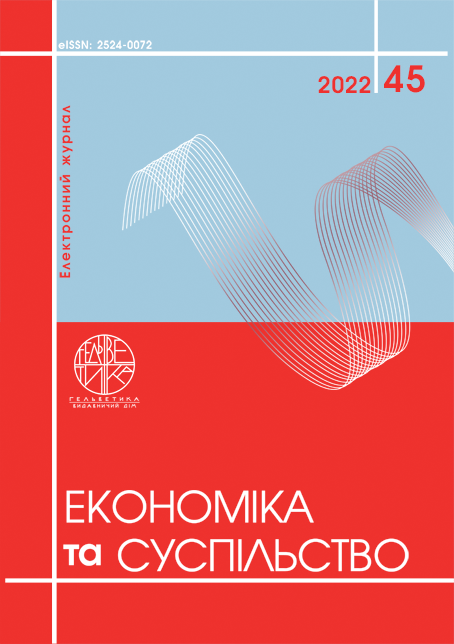ПОПЕРЕДНІЙ АНАЛІЗ І ПІДГОТОВКА ДАНИХ ДЛЯ ПРОГНОЗУВАННЯ ТРЕНДІВ КІБЕРАТАК
Анотація
Дана стаття присвячена актуальному питанню протидії кібератакам шляхом застосування методів прогнозування. У дослідженні запропоновано концептуальну модель прогнозування трендів кібератак, яка передбачає реалізацію етапу попереднього аналізу та підготовки даних, та етапу розробки прогнозної моделі. Розрахунки проводилися на основі панельних даних, сформованих для 40 країн та 30-денного періоду. Проведений аналіз базових статистик виявив неоднорідність даних, обумовлених різним рівнем розвитку узятих для розрахунків країн. Реалізована декомпозиція трендів встановила відсутність трендової складової в рядах, наявність сезонної компоненти та адитивного зв’язку між складовими моделі. Перевірка на стаціонарність підтвердила стаціонарність досліджуваних рядів. Проведений тест Харка-Бера дозволив виявити невідповідність даних нормальному розподілу, в результаті чого було проведено їх трансформацію.
Посилання
World Economic Forum. (2020). The Global Risk Report. Retrieved from: https://www3.weforum.org/docs/WEF_Global_Risk_Report_2020.pdf (December 10, 2022).
IBM Security. (2022). Cost of a Data Breach Report 2022. Retrieved from: https://www.ibm.com/downloads/cas/3R8N1DZJ (December 10, 2022).
Mclean, M. (2022). Must-Know Cyber Attack Statistics and Trendshttps. Retrieved from: www.embroker.com/blog/cyber-attack-statistics/ (December 10, 2022).
Reports largest single day virus spike. Retrieved from: https://abcnews.go.com/Health/wireStory/latest-india-reports-largest-single-day-virus-spike-70826542 (December 10, 2022).
Stacey, P., Taylor, R., & Spanaki, K. (2021). Emotional reactions and coping responses of employees to a cyber-attack: A case study. International Journal of Information Management, 58, 102298. DOI: https://doi.org/10.1016/j.ijinfomgt.2020.102298
Shandler, R. & Gomez, M. A. (2022). The hidden threat of cyber-attacks–undermining public confidence in government. Journal of Information Technology and Politics. DOI: https://doi.org/10.1080/19331681.2022.2112796
Lonsdale, D. J. (2020). The Ethics of Cyber Attack: Pursuing Legitimate Security and the Common Good in Contemporary Conflict Scenarios. Journal of Military Ethics, 19(1), 20–39. DOI: https://doi.org/10.1080/15027570.2020.1764694
Bolpagni, M. (2022). Cyber risk index: a socio-technical composite index for assessing risk of cyber attacks with negative outcome. Quality and Quantity, 56(3), 1643–1659. DOI: https://doi.org/10.1007/s11135-021-01199-3
Simons, G., Danyk, Y., & Maliarchuk, T. (2020). Hybrid war and cyber-attacks: creating legal and operational dilemmas. Global Change, Peace and Security, 32(3), 337–342. DOI: https://doi.org/10.1080/14781158.2020.1732899
Weaver, G. A., Feddersen, B., Marla, L., Wei, D., Rose, A. & Van Moer, M. (2022). Estimating economic losses from cyber-attacks on shipping ports: An optimization-based approach. Transportation Research Part C: Emerging Technologies, 137, 103423. DOI: https://doi.org/10.1016/j.trc.2021.10342
Leroy, I. (2022). The relationship between cyber-attacks and dynamics of company stock: the role of reputation management. International Journal of Electronic Security and Digital Forensics, 14(4), 309–317. DOI: https://doi.org/10.1504/IJESDF.2022.123891
Akoto, W. (2021). International trade and cyber conflict: Decomposing the effect of trade on state-sponsored cyber attacks. Journal of Peace Research, 58(5), 1083–1097. DOI: https://doi.org/10.1177/0022343320964549
Lallie, H. S., Shepherd, L. A., Nurse, J. R.C., Erola, A., Epiphaniou, G., Maple, C., et al. (2021). Cyber security in the age of COVID-19: A timeline and analysis of cyber-crime and cyber-attacks during the pandemic. Computers and Security, 105, 102248. DOI: https://doi.org/10.1016/j.cose.2021.102248


